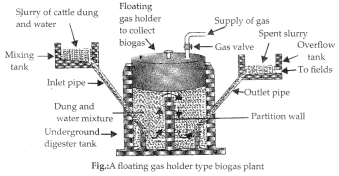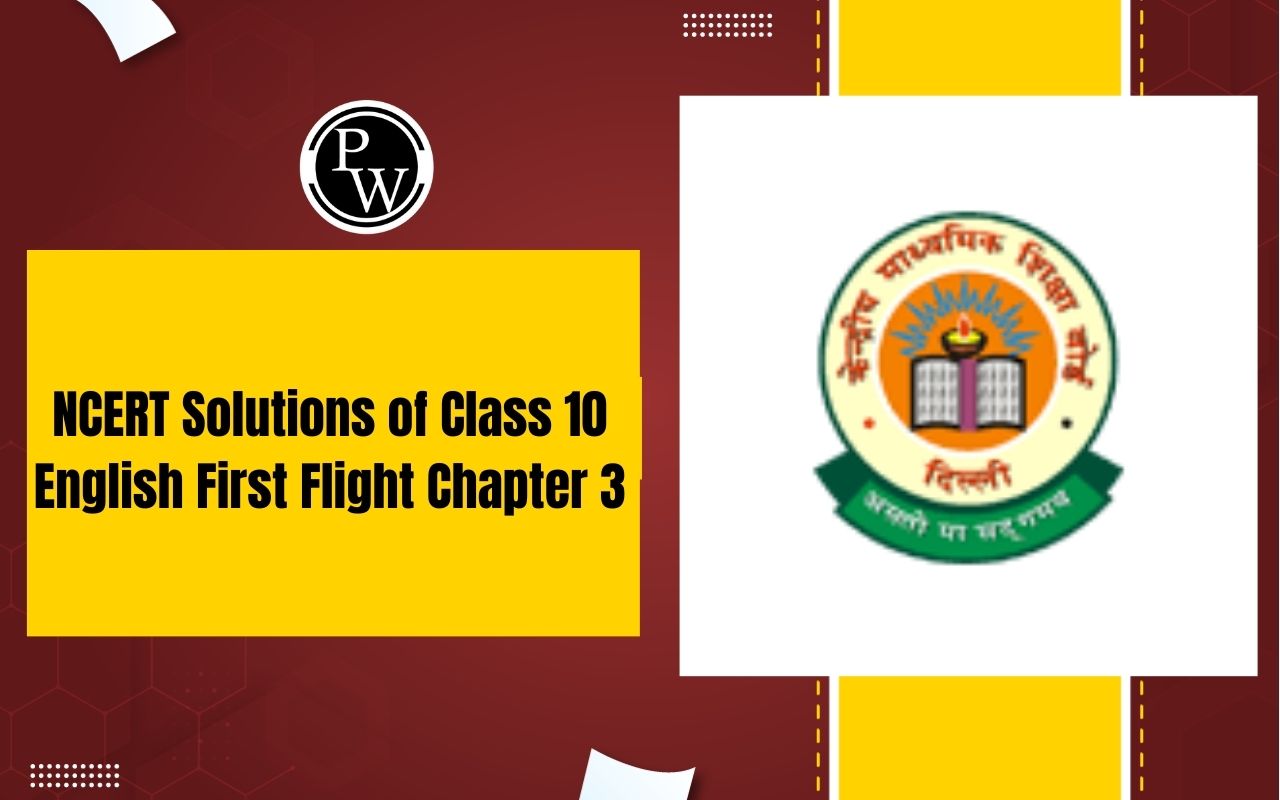
CBSE Important Questions for Class 10 Science Chapter 14: CBSE Important Questions for Class 10 Science Chapter 14 Sources of Energy are created to help students grasp important concepts related to renewable and non-renewable energy sources.
Practicing these questions enables students to better understand the advantages, disadvantages, and sustainability of various energy forms, ultimately preparing them for exams and enhancing their ability to apply scientific knowledge in real-world contexts.CBSE Important Questions for Class 10 Science Chapter 14 Overview
CBSE Important Questions for Class 10 Science Chapter 14 Sources of Energy are created by subject experts of Physics Wallah. These questions focus on key concepts such as renewable and non-renewable energy sources, their advantages, limitations and the importance of sustainable energy solutions.By practicing these expert-created questions, students can improve their exam preparation and develop a deeper grasp of how energy is harnessed and used in everyday life.
CBSE Important Questions for Class 10 Science Chapter 14 PDF
CBSE Important Questions for Class 10 Science Chapter 14 Sources of Energy has been prepared by subject experts to enhance your understanding of the topic. By practicing these questions, you'll be able to strengthen your grasp of the chapter and perform well in your exams. The PDF link for these important questions is available below for easy access and download.CBSE Important Questions for Class 10 Science Chapter 14 PDF
CBSE Important Questions for Class 10 Science Chapter 14 Sources of Energy
Here we have provided CBSE Important Questions for Class 10 Science Chapter 14 Sources of Energy-Question 1: How is hydropower harnessed?
Answer: Hydropower is generated by using the stored water in dams. The potential energy of the water is turned into kinetic energy as it falls. This kinetic energy is then used to spin turbines, which in turn generate electricity.Question 2: Define 1 MW.
Answer: 1 MW (megawatt) is the amount of power used or produced when 1 megajoule of energy is consumed or released in one second.Question 3: Mention two disadvantages of constructing Tehri Dam.
Answer: The construction of Tehri Dam displaced over 100,000 people, causing protests and legal issues. Additionally, large ecosystems were submerged, releasing methane, a harmful greenhouse gas.Question 4: What happens when water from great heights is made to fall on blades of a turbine?
Answer: When water falls from a great height, its potential energy becomes kinetic energy. This energy is transferred to the turbine blades, causing them to spin, which helps generate electricity.Question 5: Why is biogas considered an excellent fuel?
Answer: Biogas is an excellent fuel because it burns cleanly without producing smoke, and the leftover slurry can be used as a good fertilizer.Question 6: Name any two nutrients that the spent slurry has in the biogas plant.
Answer: The spent slurry from a biogas plant contains nitrogen and phosphorus.Question 7: Write the energy conversion that takes place in a hydropower plant.
Answer: In a hydropower plant, the potential energy of stored water is converted into electrical energy.Question 8: Name any two fossil fuels.
Answer: Two examples of fossil fuels are coal and petroleum.Question 9: Name any two conventional sources of energy.
Answer: Two conventional energy sources are fossil fuels and wind energy.Question 10: What is meant by the term 'biomass'?
Answer: Biomass refers to organic materials like cow dung, crop residues, and vegetable waste that can be decomposed in the absence of oxygen to produce biogas.Question 11: What are the characteristics of the microorganisms used in a biogas plant
Answer: In a biogas plant, anaerobic microorganisms are used, which means they can break down organic matter without the need for oxygen.Question 12: What are fossil fuels, and why can burning them lead to global warming?
Answer: Fossil fuels are fuels made from the remains of plants and animals that have been buried for millions of years. When burned, they release carbon dioxide, which contributes to the greenhouse effect and leads to global warming.Question 13: What is the main component of biogas? How is it obtained, and what are two advantages of using biogas?
Answer: The main component of biogas is methane (about 75%). It is produced by the anaerobic decomposition of organic matter in a biogas plant. Two benefits of using biogas are that it doesn’t produce smoke and it has a high calorific value.Question 15: Define: (i) Biomass (ii) Anaerobic degradation
Answer: (i) Biomass: Biomass is organic matter such as plant materials, crop residues, and animal waste, which can be broken down to produce energy.
(ii) Anaerobic degradation: This is the process where large organic molecules are broken down into smaller, simpler molecules in the absence of oxygen.Question 16: There are many limitations associated with the setting up of wind energy farms to harness energy. Raman wants to generate electricity by using a windmill in his village in Uttar Pradesh.
(i) Is it advisable to set up wind energy farms in his village? Give a reason for your answer.Answer: No, it is not advisable because wind farms need a location with consistently strong winds for most of the year. The wind speed must exceed 15 km/h to keep the turbines operating efficiently.
(ii) Write any two limitations associated with wind energy farms.Answer:
(a) The initial cost of building a wind energy farm is very high. (b) The turbines and towers require regular and costly maintenance. (iii) What energy transformations take place when a windmill is used to generate electricity?Answer: The wind's kinetic energy is converted into mechanical energy when it turns the turbine, which is then transformed into electrical energy.
Question 17: Explain the process of biogas production in a biogas plant with a labeled diagram.
Answer:
In a biogas plant, agricultural waste and dung are mixed with water in the mixing tank to create a slurry. This slurry is then fed into the digester, where anaerobic fermentation takes place, producing biogas. This process usually takes 6-8 weeks. The pressure from the produced biogas pushes the spent slurry into the overflow tank, where it can be used as manure for crops. The biogas is extracted for use through a gas valve, and the process is kept continuous by feeding in more slurry and removing the spent slurry periodically.
Question 18: List any four disadvantages of using fossil fuels for energy production.
Answer:
- Fossil fuels are non-renewable and take millions of years to form.
- Their use leads to air pollution.
- They contribute to acid rain.
- Their burning releases greenhouse gases that lead to global warming.
Question 19: Which statement is not true about nuclear energy generation in a nuclear reactor?
(a) Energy is obtained by a process called nuclear fission. (b) The nucleus of uranium is bombarded with high-energy neutrons. (c) A chain reaction is set in the process. (d) In this process, a tremendous amount of energy is released at a controlled rate.Answer:
(b) The uranium nucleus is actually bombarded with low-energy neutrons, not high-energy neutrons.Question 20: Assertion (A): In nuclear fission, the energy generated by the fission of a uranium atom is 10 million times more than the energy from burning an atom of carbon from coal.
Reason (R): In nuclear fission, the nucleus of a uranium atom splits into smaller nuclei, releasing a large amount of energy.
(a) Both (A) and (R) are true, and (R) explains (A). (b) Both (A) and (R) are true, but (R) does not explain (A). (c) (A) is true, but (R) is false. (d) (A) is false, but (R) is true.Answer: (a) Both (A) and (R) are true, and (R) is the correct explanation of (A).
Benefits of CBSE Important Questions for Class 10 Science Chapter 14
Understanding Exam Patterns: Practicing these important questions helps students get familiar with the exam pattern, marking schemes and question formats that may appear in the CBSE board exams.
Conceptual Clarity: Answering important questions reinforces a deeper understanding of critical concepts related to different types of energy, such as renewable and non-renewable sources, making students more confident in the subject matter.
Time Management Practice: By solving these questions students learn to manage their time effectively during exams helping them complete the paper within the given time frame.
Boosts Confidence: Solving important questions and checking answers against solutions provides self-assessment opportunities boosting a student confidence before facing the actual exam.
Better Retention: Frequent practice with these important questions aids in better retention of core concepts, such as fossil fuels, solar energy, wind energy, nuclear energy, and their environmental impact.
Targeting High Scores: These important questions often align with those likely to appear in the board exam, which helps students target high scores by focusing on important areas.
CBSE Important Questions for Class 10 Science Chapter 14 FAQs
What is meant by renewable energy?
What are fossil fuels?
What is geothermal energy?
What is nuclear energy and how is it produced?










